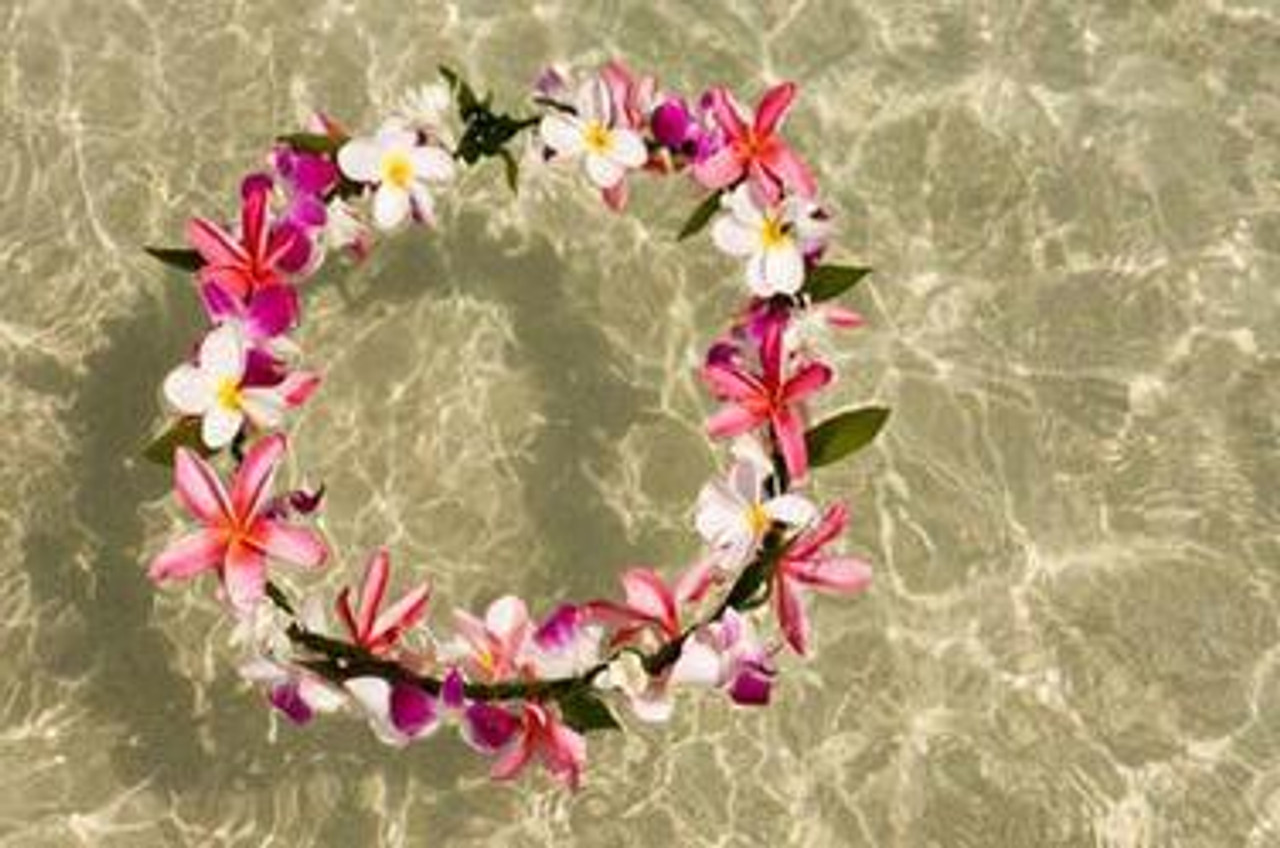The lei is as iconic to Hawaiʻi as the hula, surfing and spirit of aloha. The fragrant, flower garland has long been a symbol of affection and appreciation that is given to loved ones.
5 Minute Read
The lei is as iconic to Hawaiʻi as the hula, surfing and spirit of aloha. The fragrant, flower garland has long been a symbol of affection and appreciation that is given to loved ones.
Today in Hawaiʻi, we give our friends and family a lei on special occasions, such as when they are leaving home or returning after a long absence. No birthday, wedding, retirement party or graduation ceremony is complete without the giving of a lei. A lei really can express a multitude of words -- receiving one says that you are loved, respected and appreciated.
Practically every kamaʻāina (resident) of Hawaiʻi has adopted the Native Hawaiian tradition of giving and receiving lei, regardless of their ethnic heritage.
On May 1, while the rest of the world commemorates workers’ rights or the coming of spring, in Hawaiʻiwe have Lei Day. A de facto holiday, Lei Day celebrates the beauty and history of the lei with colorful pageantry and festivities.
I can remember the joy of the annual Lei Day ceremony that permeated the campus of my elementary and middle schools while growing up on Oʻahu. The entire student body would get involved: Each class performed the hula for the entire school (we practiced for weeks beforehand), and we anxiously awaited the arrival of the royal court and Lei Day king and queen, announced by the blowing of a conch shell.
A hallmark of Lei Day, the royal court procession has eight princesses -- each one representing a different Hawaiian island -- accompanied by a man carrying a kāhili -- a feathered staff used in ancient times as a symbol of royalty.
Each of the Hawaiian Islands has its own official color and lei -- representing a flower or foliage that is endemic to that island or once thrived there. The Lei Day princess will wear the color of the island she is representing and be draped in the proper accompanying lei.
- White: Niʻihau, “The Forbidden Isle,” and a lei of made of pūpū(shells). Niʻihau is the only island represented by a shell, as its residents are famous for the intricate lei they craft out of shells that can only be found on that island.
- Purple: Kauaʻi, “The Garden Isle,” and a lei made from the rare, anise-scented mokihana berry.
- Yellow: Oʻahu, “The Gathering Place, and a lei of golden ʻilima flowers.
- Green: Molokaʻi, “The Friendly Isle,” and a lei of polished kukui (candlenuts).
- Orange: Lānaʻi, “The Pineapple Island,” (because of the island’s long history as a pineapple plantation) and a lei of kaunaʻoa, a native, leafless vine.
- Gray: Kahoʻolawe, “The Target Island,” (the uninhabited island was used by U.S. Armed Forces for live-fire training and test explosions for decades), and a lei of hinahina, a native, silvery heliotrope that grows on the beach.
- Pink: Maui, “The Valley Isle,” and a lei oflokelani (a small rose).
- Red: The island of Hawaiʻi, “The Big Island,” and lei of ʻōhiʻa lehua, a native honey plant. The red ʻōhiʻa lehuais often the first shrub that will sprout from a recent lava flow.
Being named the Lei Day queen is great honor, and in Hawaiʻiis arguably a bigger deal than being named Homecoming Queen.
The oldest and most extravagant Lei Day festival happens every year on Oʻahu at KapiʻolaniPark, at the east end ofWaikīkī. Now in its 86th year, visitors to the festival can see different varieties of the garland in the lei-making contest exhibit, such as haku lei (worn on the head). You’ll see how complex and intricate a lei can be, the plethora of materials used and complex weaving techniques -- it is truly an art form, and a lei is much more than a simple strand of one single flower.
